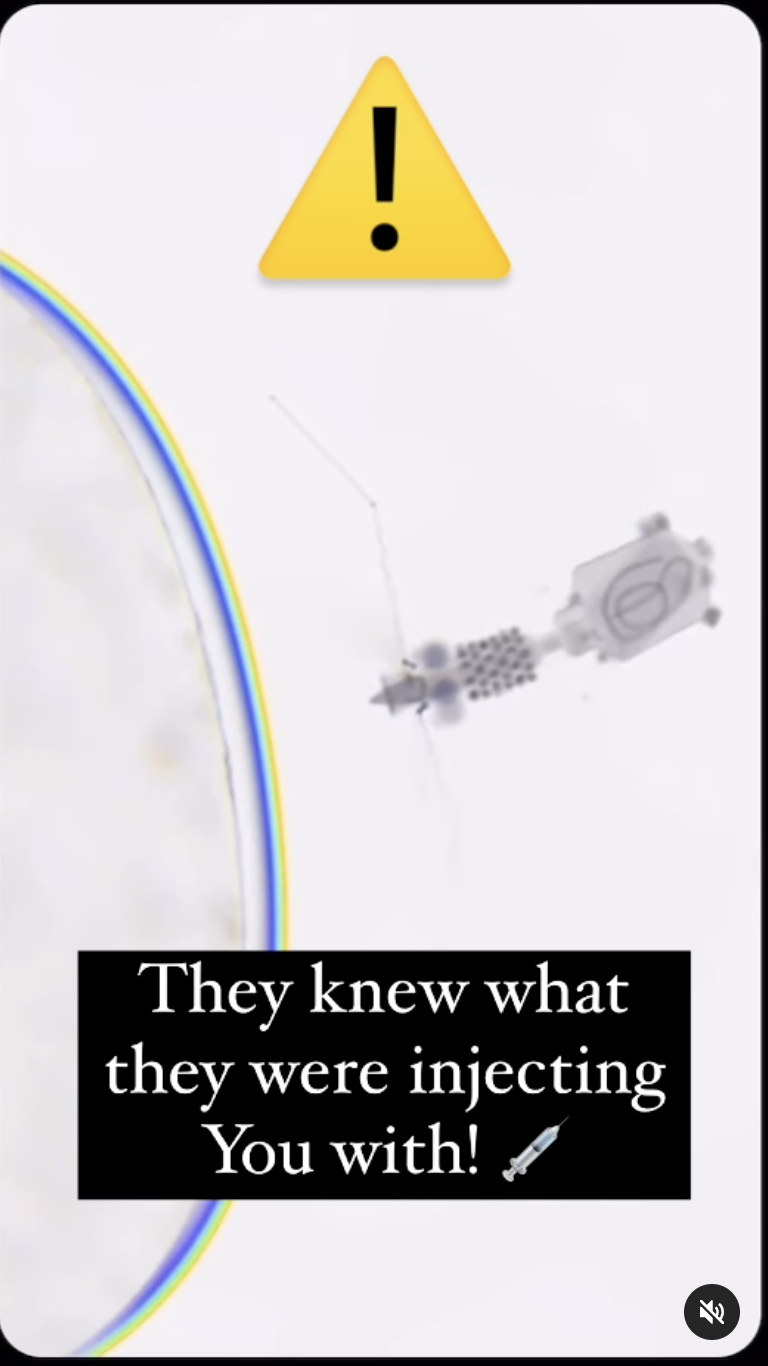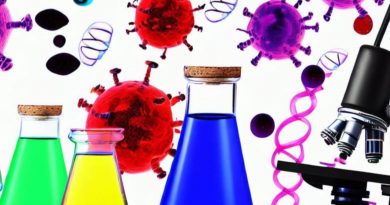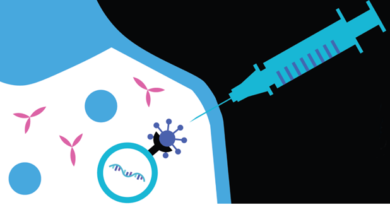Fact Check: Video Does NOT Show Animation Of Human Vaccination — It’s 2014 Depiction Of Viral Material Infecting Bacteria

Does a video shared on Instagram show what happens when a person is “injected” with a vaccination, thus offering evidence for detoxification supplements? No, that’s not true: The video originally was posted to YouTube in 2014 by a creator who describes his videos as being for “science fiction work, personal work and play.” According to the description on the 2014 video, it is an artistic rendering of a common type of virus known as a bacteriophage. It only infects bacteria species, as they invade and replicate within E. coli cells. An infectious disease expert told Lead Stories that there is “no scientific basis” that the supplements referenced in the 2024 post of the video can “clean out your blood and liver” to “get rid of the heavy metals,” as the caption claims.
The claim appeared in a clip shared to Instagram on April 1, 2024, (archived here) that included a text overlay reading, “They knew what they were injecting You with! 💉” A caption with the post read:
DETOX NOW!
NAC AND M83 will clean out your blood and liver and get rid of the heavy metals!!!
#explorepage #exploremore #instagram #instagood #instagram #instadaily #candidadetox #viral #viralreels #viralvideos #viralpost #cancercure #instanews #newpost #trending #trendingreels #hivremedy #trend #trendalert #fyp #Pcos #fypage #followers #follow #followme #followus #jesus #m83 #parasites
Below is how the post appeared at the time of writing:
(Source: Instagram screenshot captured Thu April 4 04:15:00 UTC 2024)
The text overlay on the video combined with a now-common syringe emoji implied a reference to vaccinations — likely COVID-19 given the poster’s other anti-vaccine content — to suggest that the video footage relates to how vaccines work in the body. This is not true.
The video (archived here) was first published on YouTube on August 29, 2014, by Anson Call, a creator whose “About” (archived here) section describes his productions as focusing on his “science fiction work, personal work and play, plus my academic demo reels.” A description that accompanied the video read:
A music video/animation depicting ‘modified’ bacteriophage vs ecoli. Phages don’t move this way, and this animation is for entertainment purposes only.
There is no relationship between vaccinations and the video, despite what the 2024 post on Instagram implied.
Lead Stories reached out to Dr. William Schaffner (archived here), a professor of medicine in the division of infectious diseases at Vanderbilt University Medical Center and an expert with the Infectious Disease Society of America (archived here). He responded in a phone interview on April 4, 2024.
“Bacteriophages are little genetic particles; you can think of them as viruses that infect bacteria,” he said.
Also known as phages, bacteriophages are described (archived here) in an article published on the National Library of Medicine website as “viruses that infect and replicate only in bacterial cells,” which adds that:
They are ubiquitous in the environment and are recognized as the most abundant biological agent on earth. They are extremely diverse in size, morphology, and genomic organization
“When they infect bacteria, [bacteriophages] can disrupt the metabolism of bacteria and, as a consequence, can multiply within the bacteria and thus destroy the bacteria,” Schaffner said.
There are hundreds of different types, some of which appear to have “heads,” “legs” and “tails,” according to the article on the National Library of Medicine site. Phages are incapable of the type of movement shown in the video. Instead, they depend on Brownian motion, a random motion of particles suspended in a medium. (For example, think of fruit in a gelatin salad. The fruit doesn’t move but will mobilize if the gelatin is jiggled.)
Bacteriophages are species-specific and only infect a single bacterial species or specific strain within a species. Once a bacteriophage is attached to a host bacterium, it pursues replication.
Notably, bacteriophages can’t infect or replicate in human cells. However, Schaffner explained that they are used to study potential treatments for pathogenic bacterial infections in people and animals because they can potentially attach to and kill off bacterial infections, particularly ones stemming from antibiotic-resistant bacteria.
Of course, COVID is caused by an infection of SARS-CoV-2 — a virus, not a bacteria.
The caption also references “NAC” and “M83,” presumably two supplements known as N-acetylcysteine (archived here) and Hydrochlorothiazide (archived here), respectively. NAC likely refers to a medicine used to treat an overdose of paracetamol, a non-opioid pain reliever like Tylenol. M83, commonly known as Microzide, is a thiazide diuretic, or water pill, that reduces the body’s water by increasing urine flow.
“NAC and M83 are nutritional supplements, and they have been advocated to ‘cleanse the body’ of various impurities, toxins, metals, and the like,” Schaffner said, adding that “All of this kind of hypothesis [and] reported effects are entirely theoretical. There is no scientific basis for them, no matter how passionately some people may advocate for them.”
Other Lead Stories articles on claims concerning vaccinations are here.
This article has been archived for your research. The original version from Lead Stories can be found here.



